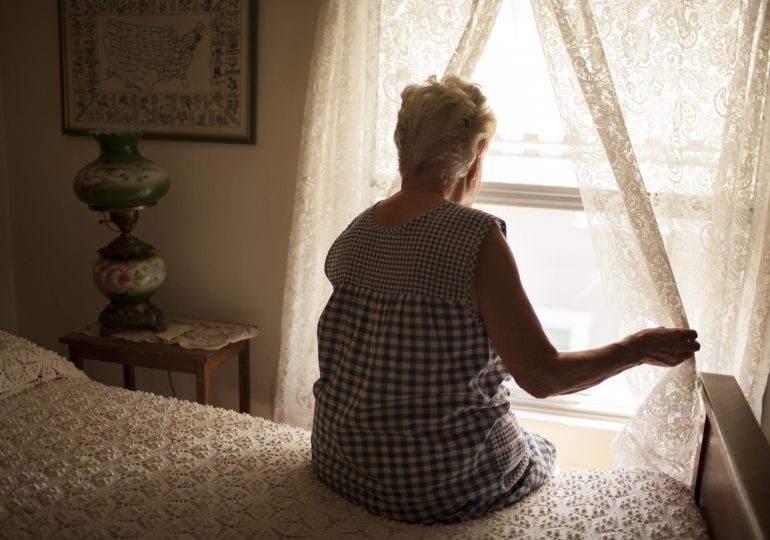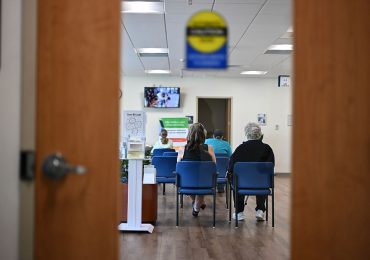The number of senior citizens is growing rapidly; individuals aged 65 and older increased from 39.6 million in 2009 to 54.1 million in 2019 (a 36% increase) and is projected to reach 94.7 million by 2060. This has come about as a result of advances in modern medicine and improved living conditions.
However, over the last few years, reports not only in the U.S., but from around the world, have brought to light a major new pandemic that may reach deeply into the fabric and soul of our society: The usual respect and care of our aging population is decaying into a growing incidence of neglect and abuse. Increasing reports of horrific events that affect our aging population detailing prolonged suffering and premature death are now commonplace.
[time-brightcove not-tgx=”true”]
Frankly, elder abuse reflects a decay of basic human rights in a major segment of our society. This type of neglect has many faces which may include physical, sexual, emotional, and psychological abuse. Victims are also commonly subjected to financial abuse, often losing savings, assets, homes, and other material property. Individuals may also be exposed to abandonment and loss of contact with family and friends.
This form of neglect may impact the elderly the most, leading to emotional issues such as loss of dignity, self-worth, and respect. Such abuse may be a single event or a cycle of repeated acts. It can vary from subtle—such as not acting in a protective or loving manner in a relationship where there is an expectation of trust, but also within a family or in a senior care facility.
Read More: Why Americans Are Uniquely Afraid to Grow Old
Prior to the COVID-19, 1 in 10 elderly adults in the U.S. experienced elder abuse. A major review in 2017 of 52 studies from 28 nations reported that 15.7% of people over 60 were subjected to some form of abuse.
In 2020, this number doubled to 1 in 5—a nearly 84% increase. A study by the Administration for Aging stated that hundreds of thousands of seniors were abused, neglected and exploited by family and others. What is even more disturbing is that in 90% of cases, the abuser is a member of the family, based on findings in the study. In fact, two-thirds of the abusers were adult children or spouses. We, of course, find this to be a shocking statistic; since the dawn of recorded history the elderly have been given great respect and were cared for by both the family and the community as a whole.
Why did this natural relationship so greatly change in such a short period of time? We believe the root cause are shifts in family demographics: over time, adult children now live great distances from parents, but also may have stressful careers, leading to personal issues that distract from attention to parents.
The pandemic further aggravated this issue with a marked decline in visits and travel related to restrictions. Families were also unable to visit elderly relatives in senior care facilities in most states. This may have been a mechanism that loosened family bonds and connections that were never fully restored since the onset of the pandemic. Moreover, growing economic pressures brought on by the pandemic also impacted families. In most households, fewer individuals are free from the obligation to care for parents on a daily basis. The reason is that children must work in order to pay bills, rent, and buy food.
Read More: Why America Is Failing To Feed Its Aging
The pandemic also pressured families to care for elderly and frail family members at home because nursing homes were not accepting admissions. Caring for individuals with cognitive issues such as dementia and Alzheimer’s at home without help of course created many issues. This stressful home environment can trigger strong negative emotions in caregivers and lead to physical and verbal abuse. Use of alcohol and drugs also peaked during the pandemic and may also have played a key role in the rise of such abuse.
The escalating opioid crisis also led to an uptick in misuse and diversion of opioids by the elderly, which has transformed into an increase in pain and suffering of elderly persons with chronic pain. The increased prevalence of substance abuse has encouraged family members to raid the financial assets and valuables of elderly family members. Widespread layoffs and job loss during the pandemic are other factors underlying the exploitation of elderly parents by family members.
Social isolation, a byproduct of lock downs, further magnified these events in that typical family interactions abruptly ended, leading to a breakdown in families’ ability to spot early signs of decline in function or cognitive impairment.
Family members being unprepared or unable to take on the role of caregivers are an additional factor in the elderly being more susceptible to becoming victims of abuse and violence . Data indicates that it’s more likely for children to be raised without an extended family, devoid of exposure to elderly relatives living in the same household.
The pandemic also disrupted access to community centers, social workers, and support agencies that often aid families by offering staffing and education. Rising food and utility prices added further financial stress, ultimately leading to moral injury and burnout among care givers.
Technology has also played a role in the rise of financial abuse. It is now very easy to transfer financial assets electronically with a few key stokes from an elderly individual—often no signatures are necessary. Media reports are filled with stories of family raiding retirement accounts, selling assets, and taking homes away from the elderly. Elderly individuals may not be tech savvy and therefore vulnerable to financial abuse. They can also be easy targets for telemarketing schemes and internet fraud, placing them at risk for identity theft.
Many families may believe that placement of loved ones into a senior living facility may be representative of a loving and supportive “safety net.” However, this industry is also in crisis. Over 3.2 million adults are currently living in nursing homes and other long term care facilities in the US. As many as one-third of all adults will enter a nursing at point during their lives as the US population ages. Sadly, nursing homes are not a safe haven: abuse is increasing due to understaffing, improper training and staff burn out. The industry was greatly affected by the pandemic with loss of beds, lost income, and loss experienced caregivers. These factors have led staff members to take out their anger on they people they should be caring for. A shocking report by the World Health Organization reported that 66% of nursing home staff members admitted to abusing individuals under their care.
How can families and society deal with this pandemic of abuse? The most effective approach involves increased focus on education and community support. Families need access to home care services, including social workers, occupational therapists and physical therapists—team members who make important contributions to the comprehensive care of our loved ones. In some cases, this may also involve placement in a long-term care facility when the needs of a loved one are more complex in nature. Families should also be able to evaluate and monitor the care loved ones receive in long-term facilities. The need for transparency is essential, with “report cards” issued by government agencies available to the public.
At the very least, we should all attempt to reconnect with the elderly members in our lives. It can be transformative for both parents, children, and all members of an extended family and community—and can also address the nationwide epidemic of loneliness that so many elderly people suffer from.
Leave a comment





